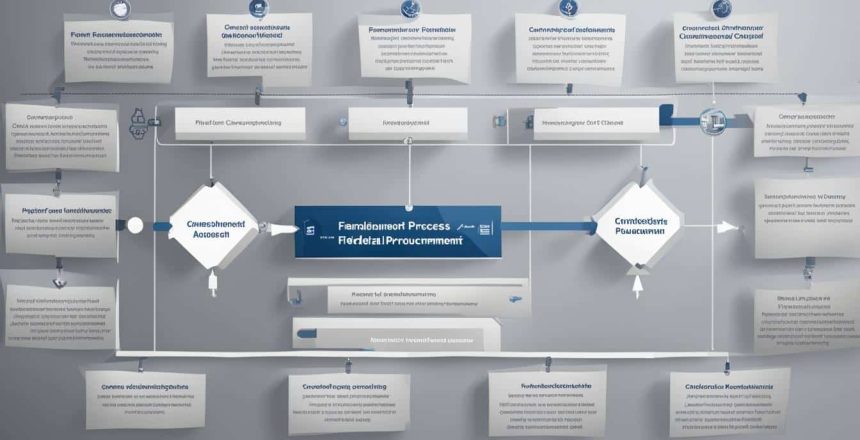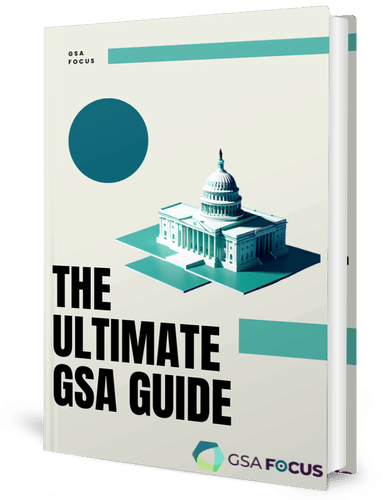When it comes to government contracting, navigating the complexities of federal procurement guidelines is essential. These guidelines ensure compliance with government procurement regulations and federal acquisition regulations, making sure that purchasing policies and government contract compliance are met. Under the Public Assistance program, applicants are required to follow their own procurement procedures that meet or exceed the standards outlined in the Federal Regulations.
Understanding the different types of contracts is crucial for effective procurement. Lump sum contracts, unit price contracts, cost plus fixed fee contracts, time and materials contracts, and piggyback contracts are all commonly used in government procurement. However, to ensure contractor efficiency and adherence to the guidelines set forth by the state, thorough monitoring activities are essential.
By simplifying the federal procurement guidelines, both applicants and contractors can navigate the procurement process with ease, ensuring compliance and a fair and efficient procurement system. Stay tuned for our upcoming sections where we delve into the importance of following federal procurement procedures, the various types of contracts and procurement methods, affirmative action, contract cost and price analysis, and more.
Importance of Following Federal Procurement Procedures
Table of Contents
ToggleWhen it comes to federal procurement, adhering to the established guidelines is of paramount importance. Following federal procurement procedures ensures compliance with the set procurement standards, guaranteeing transparency, fairness, and accountability in the procurement process. Let’s explore the key reasons why it is crucial to follow these procedures:
1. Compliance with Federal Procurement Guidelines
By following federal procurement procedures, organizations and individuals can ensure compliance with the relevant guidelines set forth by federal authorities. These guidelines prescribe the rules and regulations that govern the procurement process. Compliance helps prevent unnecessary legal issues and demonstrates responsible procurement practices.
2. Reasonable Cost and Competitive Bidding
One of the fundamental principles of federal procurement is to obtain goods and services at a reasonable cost. Following procurement procedures allows organizations to engage in competitive bidding, ensuring that contracts are awarded to the most qualified and competitive suppliers or contractors. This helps drive cost savings and promotes efficiency in the procurement process.
3. Adherence to Procurement Standards
Procurement standards set the benchmark for quality, reliability, and accountability in the acquisition of goods and services. By following federal procurement procedures, organizations can ensure that the goods, materials, and services purchased meet or exceed these standards. This promotes consistency and ensures that federal procurement projects deliver the intended benefits to the public.
4. Mitigating Risks and Ensuring Transparency
Following federal procurement procedures helps mitigate risks associated with procurement, such as fraud, corruption, and favoritism. By adhering to transparent and standardized procedures, organizations can establish clear accountability and reduce the potential for improper practices. This promotes public trust in the procurement process and reinforces the integrity of government contract awards.
5. Enforcing Procurement Accountability
Procurement procedures play a crucial role in enforcing accountability. By following these procedures, organizations can document and track their procurement activities, ensuring transparency, accuracy, and consistency. This documentation serves as a record of compliance and can be crucial in audits and evaluations.
In conclusion, following federal procurement procedures is not just a legal requirement but also a means to ensure compliance, reasonable cost, and competitive bidding. By adhering to these procedures, organizations and individuals can navigate the procurement process with confidence, foster transparency, and contribute to the overall efficiency of the federal procurement system.
Types of Contracts and Procurement Methods
When procuring goods and services under federal procurement guidelines, there are different types of contracts and procurement methods to consider. Understanding these options is crucial for successful procurement activities.
Contract Types
The federal procurement guidelines allow for various contract types to accommodate different purchasing scenarios. These include:
- Lump Sum Contracts
- Unit Price Contracts
- Cost Plus Fixed Fee Contracts
- Time and Materials Contracts
- Piggyback Contracts
Each contract type has its own benefits and considerations, making it essential to choose the most suitable option based on the specific requirements of the procurement project.
Procurement Methods
The federal regulation also provides different procurement methods for acquiring goods and services. These methods include:
- Purchase of Small Supplies
- Sealed Bids
- Competitive Proposals
- Noncompetitive Procurement
Sealed bids involve publicly soliciting and advertising bids for a firm-fixed-price contract awarded to the lowest bidder. This method promotes transparency and fair competition.
Competitive proposals require the solicitation of proposals from an adequate number of qualified sources, with the selection based on evaluation factors. This method allows for a detailed evaluation of proposals based on specific criteria.
Noncompetitive procurement can be used in specific circumstances, such as when an item is only available from a single source or in cases of public exigency or emergency. While it may deviate from traditional competitive methods, it is still subject to federal procurement guidelines and scrutiny.
By understanding the various contract types and procurement methods outlined in the federal procurement guidelines, organizations can make informed decisions that align with their specific procurement needs and objectives.
Affirmative Action and Contract Cost and Price Analysis
Federal procurement guidelines place significant emphasis on affirmative action to promote the utilization of minority firms, women’s business enterprises, and labor surplus area firms whenever feasible. This affirmative action encourages a diverse and inclusive business landscape within the federal procurement process.
Grantees are required to perform comprehensive cost or price analysis for every procurement action. These analyses serve to ensure that the procurement is conducted efficiently, while also assessing the total cost and real value of the contract. Various sources, such as vendor quotes, catalog prices, and trade publications, can be used to conduct this analysis.
Negotiating the contract price is another vital step in the procurement process. This negotiation ensures that profit is determined independently, based on thorough cost analysis or a healthy competitive market.
It is important to note that the costs and prices determined, particularly those based on estimated costs, must align with federal cost principles. Compliance with these principles is crucial to maintain transparency, fairness, and fiscal responsibility within federal procurement.
Furthermore, it is necessary to have supporting documents that justify the method of procurement, the selection of contract type, the decision to accept or reject specific contractors, and the rationale behind the contract price. These documents provide evidence of compliance with federal procurement guidelines and help avoid any potential discrepancies during audits or assessments.
Procurement Regulations and Criteria
Federal procurement guidelines play a crucial role in guiding the procurement process, ensuring fair and efficient practices. Grantees are obligated to adhere to their own procurement procedures that meet or exceed the procurement standards outlined in the federal regulations. These guidelines stress the significance of competition, making it mandatory for all procurement transactions to undergo full and open competition.
Geographical preferences in bid evaluation are restricted, requiring impartial selection procedures for all procurements. To maintain transparency and integrity, it is essential to avoid conflicts of interest and prevent the awarding of contracts to debarred contractors.
The procurement regulations also provide specific criteria for awarding contracts, taking into account various factors such as purchase methods, competition, affirmative action, contract cost and price, and contract provisions. Compliance with these regulations ensures that the procurement processes are conducted fairly and efficiently, promoting transparency and accountability.
Source Links
- https://www.ojp.gov/tfsc/procurement_guide_508_1
- https://sema.dps.mo.gov/docs/programs/Planning-Disaster-Recovery/SPAP/ProcurementGuide.pdf
- https://www.acquisition.gov/far/part-13



